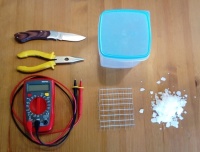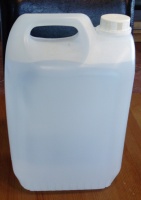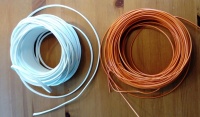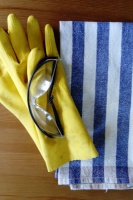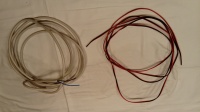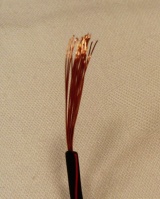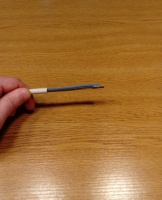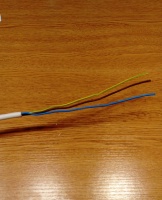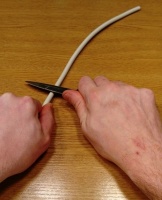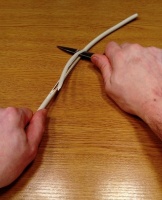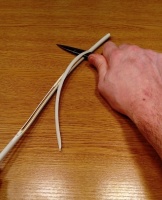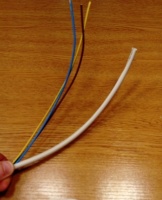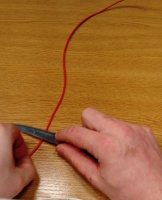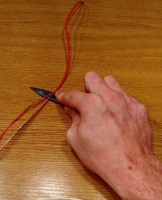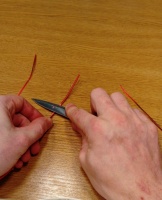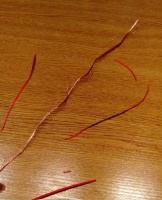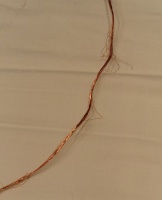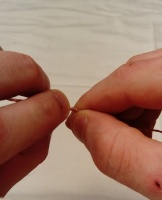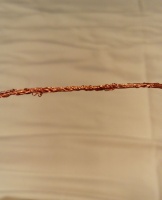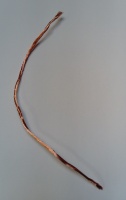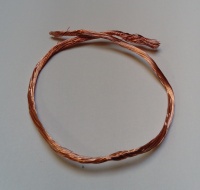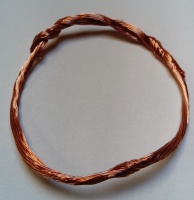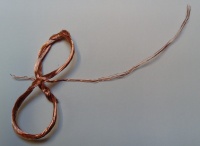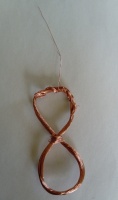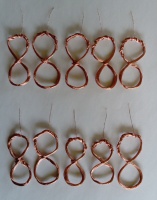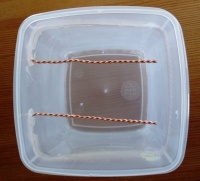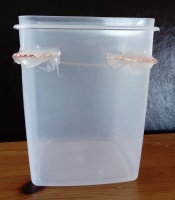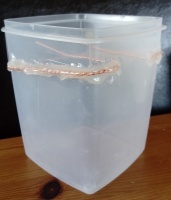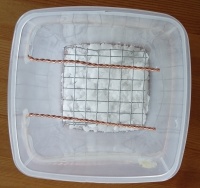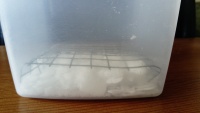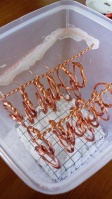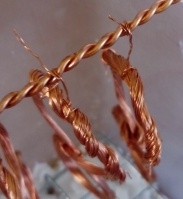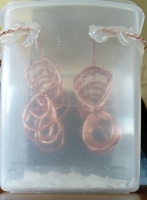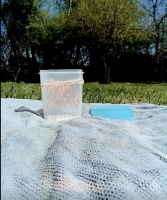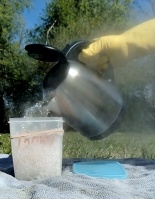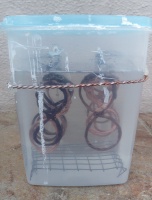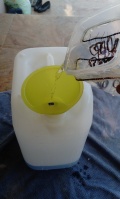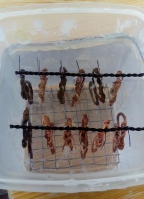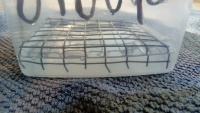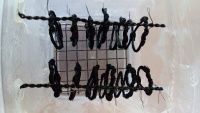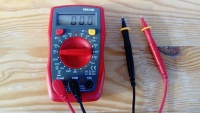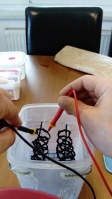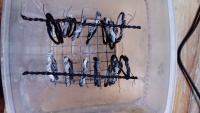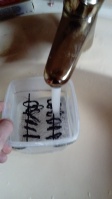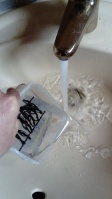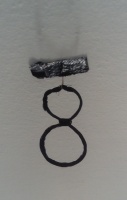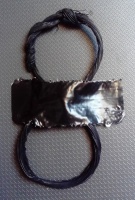Difference between revisions of "Testpage general"
(Tag: Visual edit) |
(→Production of the Infinity Loop) (Tag: Visual edit) |
||
| Line 80: | Line 80: | ||
== Production of the Infinity Loop == | == Production of the Infinity Loop == | ||
| − | Now the Infinity Loop gets formed. <gallery widths="200" heights="200"> | + | Now the Infinity Loop gets formed. |
| + | |||
| + | The wire is formed into a circle with the two ends crossing each other and extending 1-2 cm beyond the circle. Twist the ends with the circle. Take the circle in both hands between your fingers and turn one side 180 degrees to form a eight. <gallery widths="200" heights="200"> | ||
File:Infinity Loop 1.jpg| | File:Infinity Loop 1.jpg| | ||
File:Infinity Loop 2.jpg| | File:Infinity Loop 2.jpg| | ||
File:Infinity Loop 3.jpg| | File:Infinity Loop 3.jpg| | ||
File:Infinity Loop 4.jpg| | File:Infinity Loop 4.jpg| | ||
| − | </gallery> | + | </gallery>Take one or more single strands and wrap the middle part so that it fits tight. Wrap one or a few strands once around the area where you have connected the Infinity Loop wire. This strand, or strands, will later be used to hang the wire for nano-coating. |
| − | <gallery widths="200" heights="200"> | + | (It is important that the area where you have connected the Infinity Loop wire is on top, as it will be easier to reach it later with the poles of the multimeter).<gallery widths="200" heights="200"> |
File:Infinity Loop 5.jpg| | File:Infinity Loop 5.jpg| | ||
File:Infinity Loop 6.jpg| | File:Infinity Loop 6.jpg| | ||
Revision as of 16:13, 24 April 2020
Required Equipment
The Infinity Loops are made of stranded copper wire and are nano-coated.
First the Copper wire is prepared and the Infinity Loops are formed. For this process you need:
- stranded Copper wire
- cutting pliers, or scissors
- knife
When the Infinity Loops are formed, they become nano-coated. For this process you need:
- A plastic container with lid (not too big)
- Weights for weighting down the lid,
- Ready-made Copper Infinity Loops
- ~ 50 grams of pure NaOH powder or beads on 1 liter destilled water. (Do not use drain cleaners. You can buy it in art shops; it is used to remove paint as alkaline-based stripper, or in chemist's/drugstore)
- distilled water (according to the quantity of coils and size of the plastic container) (e.g. 3 l water and ~150 grams of NaOH)
- Electric kettle or stove top to boil water
Production of bare Infinity Loops
Depending on the desired size of the Infinity Loops, select the length of the Copper wire. 20 cm of Copper wire results in a 6-8 cm long Infinity Loop, which can be attached to a Smartphone. If you want to position them on the Computer, Television, around the house, or on windows, they can also be larger. But it is not necessary to fill for example the whole window with them. A length of 8, 10, 15 cm is completely sufficient.
If you want to make many Ininity Loops at once, you may need a long Copper cable. From this you can remove all the plastic and then cut it into the desired lengths. How to remove the plastic from the wire, is explained in the following steps.
Preparation of the Copper stranded wire
Stranded wire is characterized by the fact that many small strands together form a wire. (See photo). You can find it in the hardware store, at an electrical store, or in an emergency, at home, in the power cables of your hair dryer, radio, television, coffee machine, etc. To do this, simply unplug the power cable from the outlet. Cut the entire electrical cord off of the appliance to use the whole cord.
Removing the plastic from the wire
Usually there are two or three wires in a power cable. The plastic outer sheath must first be removed. There are several ways to do this. (If you buy stranded wires separately, this step is not necessary)
Variant 1
One way to remove the outer sheath is to have the knife in one hand, place the cable on it and press it with your thumb carefully. With the other hand, as well as with the thumb you turn the cable and the knife cuts deeper and deeper into the plastic. Once you have reached the inner wires you can pull the separated plastic part from the inner wires. This is how you proceed step by step until the inner cables are exposed.Variant 2
Another possibility is to place the cable on the table and hold it with one hand. Press the blade at a slight angle and with the other hand simply pull the cable backwards against the cutting direction. This way you take off a part of the plastic and can take the wires out.
Everyone has different approaches. With a little bit of trying you will find what way works best for you.Stripping off the plastic around the strands
Now you have exposed 2 or 3 wires, which are also covered with plastic. For these wires it is best to use variant 2 to remove the plastic. Do the same as above, especially with the stranded wire, it might require some practice. Put the knife with the cutting edge back at a slight angle, with a little pressure on the plastic, and pull the wire with the other hand underneath. If you hold the knife too steep, or press too hard, you might cut into the thin strands. If you hold the knife too loosely you might slide up over the plastic and start again at the same place. Don't worry, a few cut-through strands are no problem. With some practice you will get better quickly. Remove the plastic completely.Twisting together the individual strands of the wire
Hold one end of the wire strands in one hand and the other end in the other hand. With your fingers twist the strands together starting on one end and continue to twist all the way to the other end. Make sure you are twisting the strands firmly together and have secured any fine strands that were cut short into the group.Production of the Infinity Loop
Now the Infinity Loop gets formed.
The wire is formed into a circle with the two ends crossing each other and extending 1-2 cm beyond the circle. Twist the ends with the circle. Take the circle in both hands between your fingers and turn one side 180 degrees to form a eight.